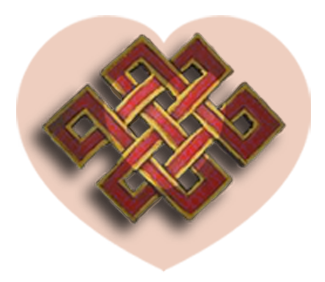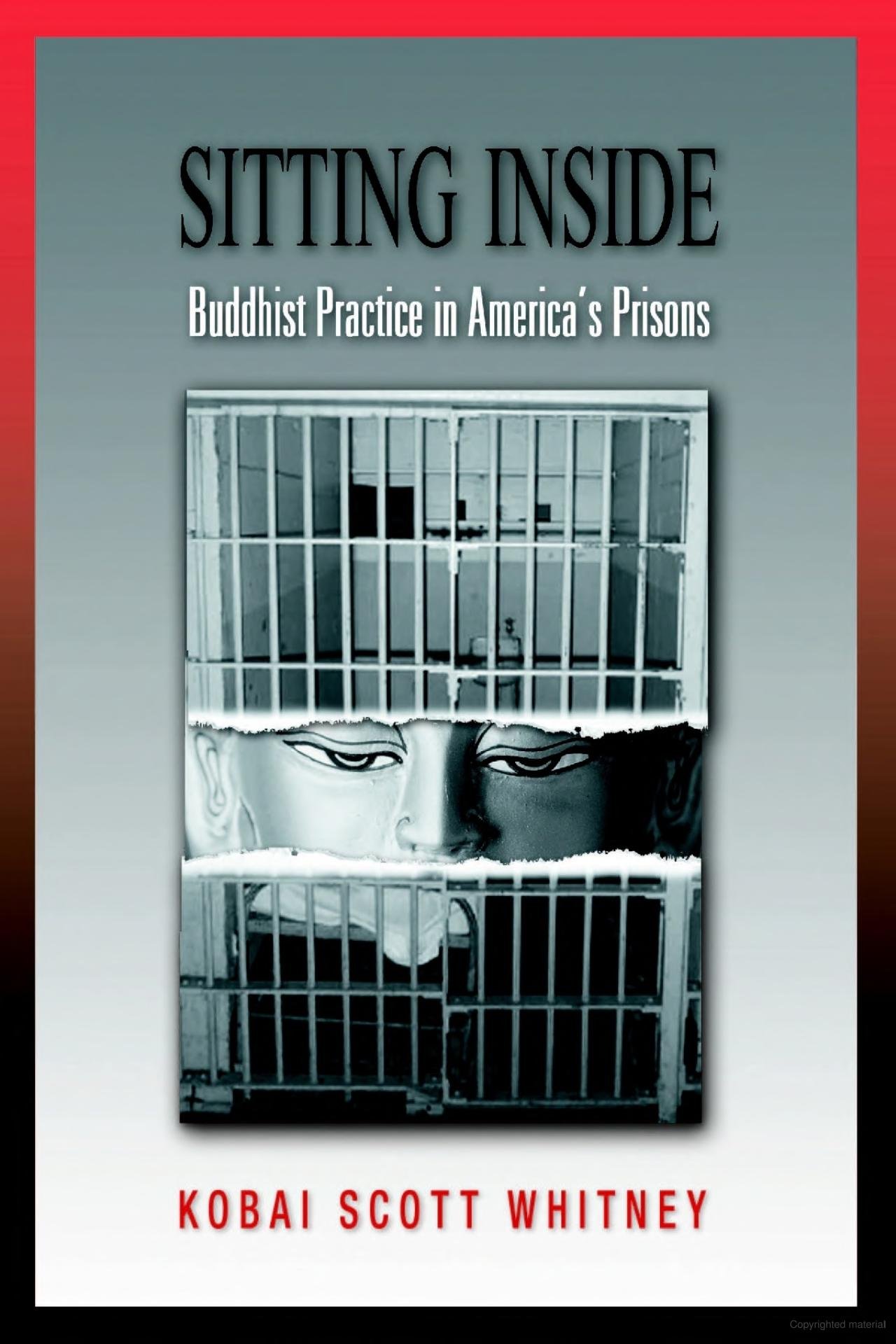My Review of Sitting Inside–Buddhist Practice in America’s Prisons by Kobai Scott Whitney
My review was originally published in the American Buddhist Women’s Magazine.
Sitting Inside–Buddhist Practice in America’s Prisons - Kobai Scott Whitney
Boulder: Prison Dharma Network, 2003, 218 pages
Rev. Susan Shannon, M. Div. has worked among diverse populations all her life in varying capacities including Tibetan Refugees, the homeless, the differently-abled, at-risk youth, and the incarcerated. Susan’s ministry has been focused on prison chaplaincy projects and transformational programs at San Quentin State Prison, including working with the renowned Guiding Rage into Power program through Insight-Out.org and providing Buddhist Chaplaincy on Death Row. Her work is rooted in the principles of Restorative Justice and Emotional Literacy, fostering interconnectedness and healthy community engagement. Susan resides in Northern California.
Writer, chaplain, former inmate, and ordained Zen monk Kobai Scott Whitney’s 2003 book Sitting Inside deserves to be brought to the forefront again for the growing number of people who are bringing Buddhism into correctional institutions as well as the increasing number of inmates who wish to know more about Buddhism.
Whitney’s book is written for several audiences: for “free people” who want to share Buddhism with inmates in prisons and jails; for the incarcerated who want to learn more about Buddhist practice; and for those interested in how Buddhism exists in prisons. Most prison-related books are written from personal experience, or from a criminology perspective, but few weave both sides together as does Sitting Inside. The lens of personal experience resonate more easily with the reader due to the emotional perspective and warmth. This contrasts to books written from the perspective of criminology, which offer a density of material based in facts and theory, usually bereft of any rehabilitative intentions.
Whitney’s writing skillfully provide us with a blend of both. He explores the humanity of inmates and expounds on the altruism of those who choose to work with inmates. As well, he describes for us the machine-like, often passive aggressive nature of the Corrections bureaucracy and how to keep our humanity in a system that is designed to erase it. “Prepare yourself for the practice of patience and for the practice of figuratively bowing to people you do not respect or agree with. Drop any expectations and see what the limits of your compassion and acceptance might be. Prison work will teach you about your own limits like nothing will” (132).
“Prepare yourself for the practice of patience and for the practice of figuratively bowing to people you do not respect or agree with. Drop any expectations and see what the limits of your compassion and acceptance might be. Prison work will teach you about your own limits like nothing will.”
The Department of Corrections officially recognizes only 5 faith traditions: Protestant, Catholic, Jewish, Muslim and Native American, and despite many lawsuits from members of excluded faith traditions, they still only hire chaplains from these traditions. Most Buddhist programs start with Buddhist volunteers who recognize the value of a meditation practice and/or Buddhism for the incarcerated. Sometimes Buddhist programs originate from an inmate or group of inmates who’ve put in a written request that a Buddhist program be added to the religious programs currently available. Often these requests are given to a staff chaplain, who then moves it ‘up the chain’ to the person in charge of volunteer programs. Buddhist volunteers are usually related to an outside sangha. My experience is that most Buddhist programs active in prisons (as opposed to correspondence courses) are provided by Zen practitioners, but that most inmates, when made aware of the different schools of Buddhism are very interested in broadening their scope of the Dharma. Buddhist volunteers are not usually trained chaplains, rather, generous volunteers who want to spread the dharma. Whitney outlines this process on page 125, “Getting a Program Started.”
The twelve Guidelines for Prison Volunteers (129) should be required reading for any prison volunteer training program. He identifies the inmate-to-inmate dynamics that exist due to their oppressive and hierarchical environment, usually bereft of choice and positive opportunity. He defines common obstacles new volunteers will encounter. He points out the blind spots and spiritual bypass potential of enthusiastic volunteers, rooted in their conditioning around race, class, privilege, and gender. “Potentially wide gaps exist between the values and belief systems of most dharma volunteers and the internal maps of the world used by many prisoners” (137).
Whitney points to the power games that are played out by everyone in a prison, regardless of rank or status “Prisons are places where power, real or imagined, is the currency of exchange” (63). He reminds us repeatedly that what we witness inside is just the tip of the iceberg in the broader scope of prison life. In my experience, working within this population peacefully can be bolstered by even a minimal understanding of prison culture. The passive-aggressive nature of such games are familiar to anyone who volunteers in prisons: lost or forgotten paperwork, blocked clearances, schedule manipulations, arbitrary dress code interpretations-the list is endless. Whitney equally lays out the power games that go on between inmates. He suggests that by being aware of the power games, we can choose not to participate. He invites us to make a distinction to accept, rather than agree, to the conditions of prisons and jails, and to continuously and humbly know our place in the hierarchy of such institutions.
“we all are part of the same suffering, the same ignorance and greed”
Throughout the book, Whitney toggles between how we can best serve inmates, and how doing so is interdependent with our own spiritual practice. We must focus equally on the sufferings and traumas of the incarcerated, of the prison employees and those of us “imprisoned by our habits, fears, and impulses” (12). He points out how easily it is to take on an ‘other’ attitude towards the prison staff. He encourages us to accept rather than agree with what we encounter inside the walls, using our patience, understanding and perseverance as a backdrop to the skills and tools we need in order to bring the Dharma to the incarcerated. Whitney reminds us that “we all are part of the same suffering, the same ignorance and greed” (74). We are constantly encouraged to deepen our own practice, to hone the spiritual and practical skills and tools we need to sustain our work in such settings.
Whitney’s treatment of the Five Precepts is brilliantly adapted to prison life. All five of the precepts: not killing; not taking what is not given; not speaking harmfully; not abusing or trafficking in alcohol or drugs; not engaging in abusive sexual behavior-are framed by quoting the Buddha speaking to Angulimala, the serial murderer of Buddhist history who later became a saint: “Angulimala, I know you have suffered deeply at the hands of humans. Hatred is the path you are on now. You should stop. Choose the path of forgiveness, understanding, and love instead.” (85). This quote is a teaching for all prison volunteers to recognize the fact that most people who have committed great harm have been hurt very deeply prior to their violent acts. On page 86, the author unites prisoners and free people, stating “Everyone, inmate or free, except for the most-saintly of us-has occasional violent fantasies. On the outside, these probably occur most frequently when we are driving our cars.” The many practical meditations offered, all rooted in traditional Buddhist practices, are perfect for use during sangha time, or when alone, as Whitney states throughout Chapter 4.
The chapter on “Dying Inside” (142) is co-written by Fleet Maull, a prison activist and former inmate. Elizabeth Kubler-Ross’s Five Stages of Grief: Denial, Anger, Bargaining, Depression and Acceptance, and how they apply to incarceration are outlined completely in this chapter. Recent studies show that unprocessed grief and loss are at the core of most violence and recidivism. In my experience as a Buddhist chaplain volunteer at San Quentin State Prison, I have found that grieving was rarely normalized during the inmate’s youth. Dying inside is the fear of nearly every inmate I’ve ever met. Buddhist teachings on death, dying, grief and loss offer a great deal to inmates.
Sitting Inside deserves its place as a guidebook and toolkit for Buddhist practitioners who are called to help alleviate the suffering and contribute to the spiritual transformation of the incarcerated through sharing the gifts of the Dharma. If the author was inspired to release an update to this book, I would love that update to include a few more topics, made relevant by recent studies and research.
The author neglects the issue of inmate suicide. In light of the practice of power, suicide is often the result of an inmate playing his last hand in the power play of prison. Likewise, the segment on Death Row (171-173) would be worth expanding. In my work as the Buddhist Chaplain on Death Row in San Quentin State Prison, “Condemned” inmates exist on the knife-edge of impermanence. If given the choice, my guess is that a surprising number of Death Row inmates would opt for swift execution. I have often heard “I’m tired of waiting. I just want to move on and do better next life.” The inner transformation Buddhist practice offers is deeply valued when ‘going inside’ is the only option. Buddhist teachings about death and dying have led many Death Row inmates to deepen their meditation practice and find strength as their clinging to a fixed identity changes and they begin to experience an interconnectedness.
There are several advanced Buddhist practitioners in my San Quentin Death Row Sangha including Jarvis Masters, who Whitney quotes extensively. Each have experienced profound spiritual realizations through the dedication of their practice to all suffering beings. Our weekly Buddhist meetings, held in a very small chapel area on the ground floor of the cell block, regularly quiet down the entire block of over 700 men. Practices to cultivate an awakened mind and warm heart have brought radical inner and outer changes for many of the men, despite their caged life: newfound compassion and empathy, new friends or old friends resurfacing, changes in their legal appeals, learning opportunities, but most of all, the gift of inner peace.
In the years since this book was issued, a growing body of research exists that cautions against the blanket application of mindfulness meditation. Mindfulness is not a panacea, as trauma experts Peter Levine and David Treleaven have discovered. People with unprocessed trauma and PTSD (most inmates) can be re-traumatized simply by calming the body and regulating the breath, giving rise to the same disturbing images and sensations which caused the original trauma. One inmate told me “As soon as I close my eyes, the film loop begins-the faces of everyone I killed in Vietnam, as if it were yesterday…”
As comprehensive as this book is, it also lacks adequate mention of the need for self-care. Self-care is usually thought of as something restorative we do after something else. My experience in prison work is that front-loading your self-care before you enter the institution will establish an energetic protection. Though our dharma work within the walls might feel invigorating, our emotional porousness can absorb the inherent negativity of the environment. Knowing when one becomes ungrounded and using mantra or centered breathing to re-focus can be the difference between a sustainable prison volunteering experience or burnout. Even a basic understanding of transference and projection can help keep your energy field safe. Vicarious trauma can manifest as misdirected anger, aggression, even accidents.
Scott Kobai Whitney’s book is a classic, regardless of whether it is reissued. Anyone interested in working with the incarcerated would greatly benefit from reading this.
Sakyadhita USA Encouraging Inclusion Across American Buddhisms
SUSA is the USA National Branch of Sakyadhita International Association of Buddhist Women
Sakyadhita USA P. O. Box 1649, Ridgecrest, CA 93556
www.sakyadhitausa.org


